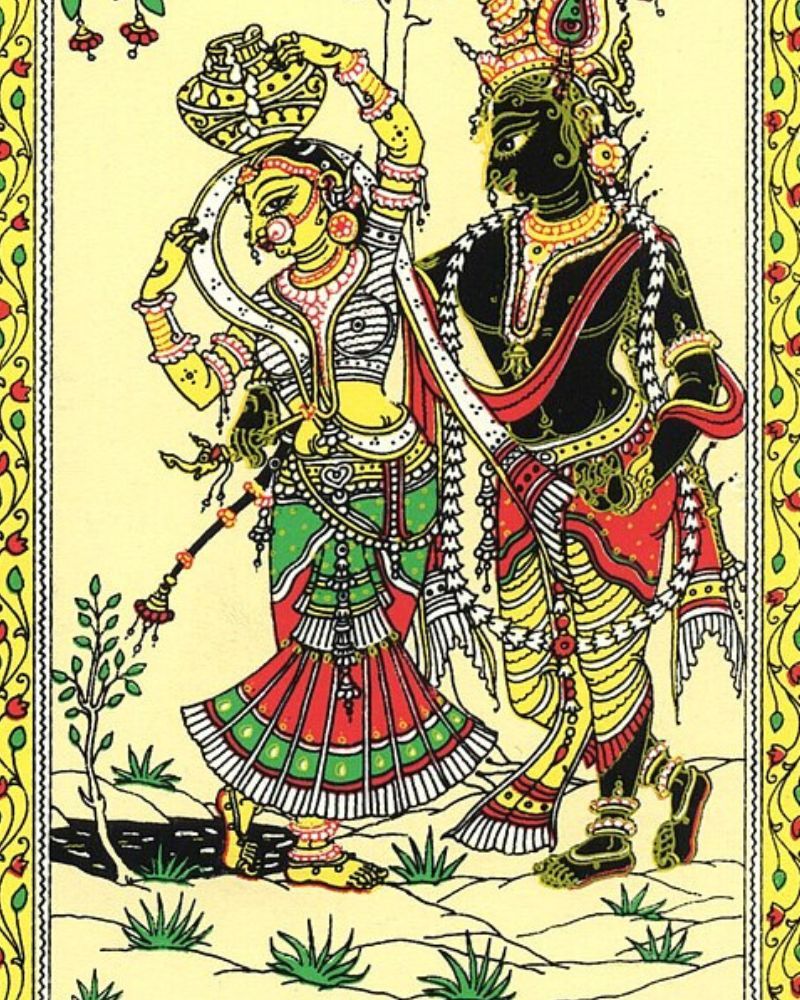Pattachitra: Odisha and Bengal’s Narrative Art That Sustains Livelihoods

Pattachitra, one of the most intricate and traditional art forms of India, originates from the states of Odisha and West Bengal. Known for its detailed storytelling, mythological themes, and rich colors, Pattachitra is more than just an artistic expression—it is a means of livelihood for numerous artisans. This ancient art has not only preserved cultural narratives but has also provided economic sustenance to communities engaged in its creation.
1. Origin and History of Pattachitra
Pattachitra derives its name from two Sanskrit words: "Patta" (cloth) and "Chitra" (painting), meaning paintings on cloth. This art form dates back over a thousand years and has been closely associated with religious traditions, particularly with the temples of Odisha and Bengal.
- Odisha’s Pattachitra: Deeply linked to the Jagannath Temple in Puri, Odisha’s Pattachitra paintings often depict Lord Jagannath, Krishna’s Raslila, and scenes from the Ramayana and Mahabharata. Traditionally, these paintings were made on dried palm leaves or cloth and used for ritualistic purposes.
- Bengal’s Pattachitra: Unlike Odisha’s style, Bengal’s Pattachitra is scroll-based (known as "Patua" art), where long scrolls are painted and unrolled as a visual storytelling aid. The Patua artists also sing folk ballads while narrating the stories depicted in their scrolls, making it an interactive art form.
2. The Process of Pattachitra Making
Creating a Pattachitra painting is a time-consuming and detailed process that involves several traditional techniques:
- Surface Preparation: In Odisha, the base (canvas) is made by pasting layers of cotton cloth with tamarind seed glue and coating it with a chalk-and-gum mixture to create a smooth surface. In Bengal, handmade paper or cloth is used.
- Natural Colors: The paintings use natural dyes derived from minerals, stones, and plant extracts. White comes from conch shells, red from vermillion, yellow from turmeric, and black from burnt coconut shells.
- Fine Detailing: Artists use fine brushes made from animal hair to draw elaborate motifs, often covering every inch of the canvas with designs.
- Lacquer Coating: Once complete, the painting is coated with lacquer to protect it and enhance its durability.
3. Impact on Livelihoods
Pattachitra has played a crucial role in sustaining artisan communities, particularly in rural Odisha and Bengal.
A. Economic Support for Artists
Entire villages, like Raghurajpur in Odisha and Naya in West Bengal, are dedicated to Pattachitra art. Families have passed down this tradition for generations, with men painting and women assisting in preparing materials. The sale of Pattachitra paintings supports these artisan families, helping them sustain their livelihoods.
B. Tourism and Cultural Heritage
With the promotion of heritage tourism, Pattachitra villages have become cultural hotspots. Tourists visit these villages to witness artists at work, purchase authentic artwork, and attend workshops. This has led to:
- Increased income for artisans through direct sales.
- Government and NGO-led initiatives to promote and preserve the art.
C. Expanding Markets and Innovation
In modern times, Pattachitra art has expanded beyond traditional scrolls and canvases. Artisans now create:
- Home Décor Items: Painted wooden boxes, wall hangings, and lampshades.
- Fashion Accessories: Sarees, dupattas, and handbags adorned with Pattachitra motifs.
- Digital and Print Versions: Some artists have adapted to digital mediums, reproducing designs on posters, textiles, and commercial goods.
4. Challenges Faced by Pattachitra Artists
Despite its cultural and economic significance, Pattachitra faces several challenges:
- Declining Interest Among Younger Generations: Many young artisans are shifting to other professions due to unstable incomes and lack of recognition.
- Competition from Imitation Artworks: Machine-printed replicas and mass-produced versions often overshadow authentic hand-painted pieces.
- Limited Market Access: Many artisans struggle to market their work beyond local fairs and exhibitions, requiring better online platforms and government support.
5. Conclusion
Pattachitra is not just an art form—it is a way of life for many artisans in Odisha and Bengal. While it preserves India’s mythological and folk traditions, it also serves as a primary source of livelihood for skilled artists. To ensure its survival, increased awareness, government support, and global appreciation are essential. By promoting authentic Pattachitra and supporting the artisans who create it, we contribute to keeping this ancient heritage alive for future generations.